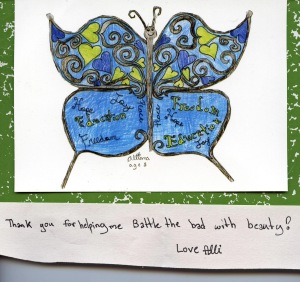Month: June 2015
“How to Love a Child” – A Lecture Series Inspired by the Philosophy of Janusz Korczak
According to Jerry Nussbaum, President of the Janusz Korczak Society of Canada, a six-part lectures series will be “devoted to key issues crucial to the well-being and rights of children and young people today.
The goal of the lecture series is to foster conversations among academics, professionals and child advocates from diverse fields concerned with the welfare of the child. We hope that the lectures and panel discussions will provide fertile ground for a fruitful exchange of ideas and approaches to improving the situation of young people in all spheres of society.”
The lectures will be held at the University of British Columbia, Vancouver.
From Darkness to Light
She’repith hapletah – the Saved Remnant, the “few who escaped,” they were known. The Final Solution during the Holocaust was supposed to eradicate the Jewish population of Europe, literally roots and all, and it nearly succeeded. In the spring after World War II, in 1946, a group of these displaced persons met in Munich, Germany, to celebrate one of the most poignant and meaningful Passover Seders in history. In normal times, the theme of the holiday is the escaped from servitude and darkness, and looking with hope and deliverance in better times. Of course, this year, those themes would take on added meaning. The Haggadah (meaning “retelling”) used at that Seder reflected that in both traditional and novel ways.

A Survivor’s Haggadah. Front Cover, Dustjacket/.
Saul Touster, Ed. Philadelphia, Jewish Publication Society, 2000
Our book actually begins almost exactly a half century later, in the spring of 1996, when a Brandeis University professor named Saul Touster was going through one of his father’s files, when a most unusual booklet fell out. Beneath a simple letter A enclosed in red and blue circles were the words “Passover Service,” with the year 1946.
Within the covers Dr. Touster found pages with Hebrew type surrounded with borders that contained striking images contrasting the symbols of the Holocaust with others of the Promised Land by a Polish survivor named Yosef Dov Scheinson, interspersed with striking woodcuts depicting the toil of enslavement by a Hungarian artist, Miklos Adler, all supplementing the usual visual representation one would expect to find in a Haggadah.

The enslavement under Pharaoh in the book of Exodus provides a metaphor for the more recent ordeal in Germany One of the most dramatic pages is dominated by a large Hebrew letter Beth, symbolic of the phrase “Bechol dor” (In the beginning…), the very first words of Genesis, the first book of the Torah. Here it also stands for “Brause Bad” (shower bath), as well as “brichal” (fleeing west), two themes that recur throughout this Haggadah. Other border designs incorporate images of the Promised Land and the Holocaust – on the same page! “We were slaves to Hitler in Germany,” our Haggadah opens, before going into the Seder, the order of the Passover observance. Ancestors were forced to make bricks for Pharaoh under bondage in Egypt, but the same trowels shown would (it was hoped) be used to create the foundations for new homes in the Holy Land.
The high quality of the A Haggadah is fascinating in its own right, but Dr. Touster’s insightful commentary provides an invaluable context, making this excellent volume much more than a coffee table book that is pretty to look at. Much more, it preserves – through retelling – the precious memory of a history that must be told, when Passover was truly a t’shuvah, a redemption, coming home, a passing from darkness to light.

This is one of the woodcuts by Milkos Adler, which the author of the Haggadah, Yosef Dov Sheinson, selected to supplement his own illustrations and writing.



